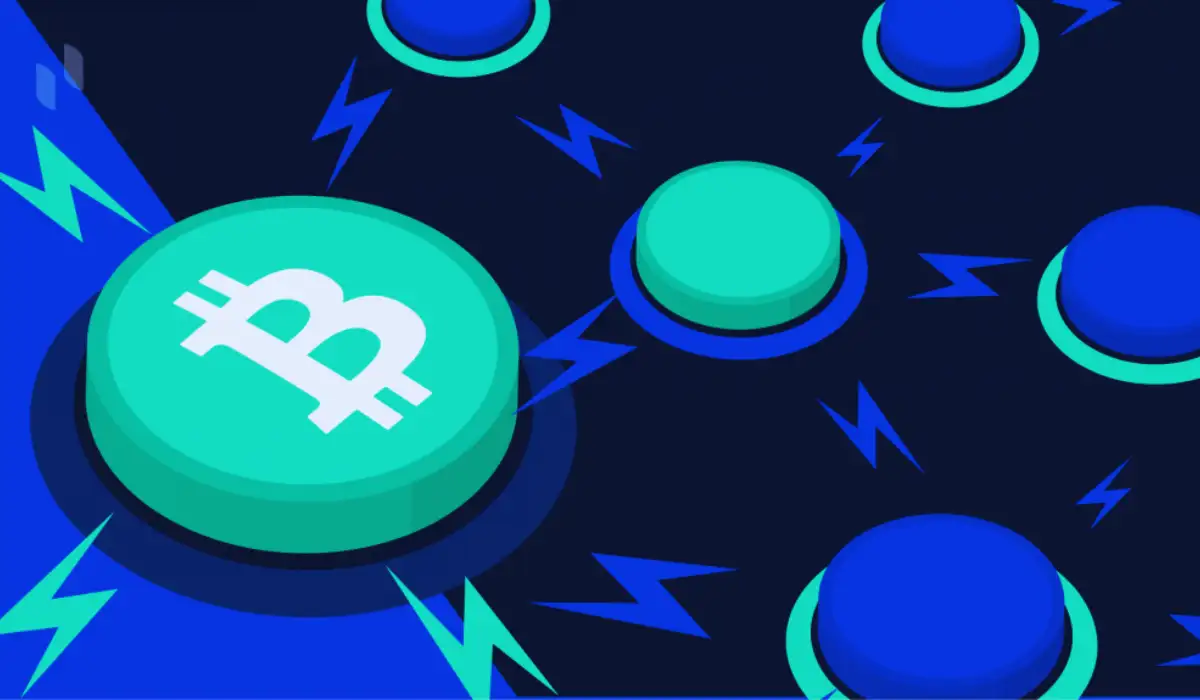Bitcoin is a popular digital currency that was introduced to the world of finance as a different form of money, operating without any intermediary. The concept was accepted globally, increasing its popularity. The increase in Bitcoin usage leads to some restrictions in the form of scaling issues. This limitation restricts the real world from using this digital currency.
As more and more people started adopting it, the transaction fees became higher and the transaction speed became slower. This is where the concept of Bitcoin lightning networks gained popularity. The Bitcoin lightning network is an innovative second-layer protocol designed to enhance the scalability and efficiency of Bitcoin transactions.
In this article, we will delve into the details of the Bitcoin Lightning network, how it works, and the secret behind its massive adoption.
What is the Bitcoin Lightning Network?

In 2018, Joseph Poon and Thaddeus Dryja developed the Lightning Network, a Layer 2 protocol that runs on top of the Bitcoin blockchain and attempts to solve the issues of speed, scalability, and transaction fees. The network became congested as the use and adoption of Bitcoin increased. The Lightning Network was thus created as a possible remedy for the so-called blockchain trilemma, which is the equilibrium that blockchain must achieve between speed, security, and decentralization.
In essence, the Lightning network is a network of distinct payment channels that enable quick and affordable transactions without requiring the blockchain to record each transaction separately. The protocol’s design, which puts security and decentralization over speed, is a direct reaction to Bitcoin’s shortcomings in managing large volumes of transactions. By enabling off-chain payments, it allows users to conduct instant and low-cost transactions without burdening the main blockchain. This technology has garnered significant attention and adoption, particularly as Bitcoin seeks to establish itself as a viable medium for everyday transactions.
With its potential to handle millions of transactions per second, the Lightning Network is not only transforming how Bitcoin is used but also paving the way for broader cryptocurrency adoption in various sectors worldwide.
How Does the Lightning Network Work?
Lightning Network utilizes the idea of payment channels by creating a peer-to-peer payment channel between two parties.
Once the channel is set up, the parties involved can communicate an infinite number of almost instantaneous and low-cost transactions. Users can use it as a separate ledger to pay for even more minor products and services, like coffee, without having an impact on the Bitcoin network. A specific quantity of Bitcoin must be locked onto the network by the payer in order to establish a payment channel.
After the Bitcoin is locked in, the recipient is free to invoice however much they like. Adding Bitcoin on a regular basis is an option for customers who wish to maintain the channel. Transactions between the two parties can be conducted using a Lightning Network channel. Certain transactions are treated differently on the Bitcoin blockchain than regular transactions.
Without alerting the primary blockchain, the two parties are able to send money back and forth indefinitely. The Layer-2 protocol significantly speeds up transactions because not every transaction must be approved by every node.
Individual payment channels between the parties involved are combined to create Lightning Network nodes that are able to route transactions. Therefore, the Lightning Network is the result of numerous payment methods being connected.
The channel can eventually be closed when both parties agree to complete the transaction. After that, every transaction made through the channel is combined into a single transaction and forwarded to the Bitcoin mainnet for recording. Consolidation prevents a large number of little transactions from simultaneously clogging the network.
Combining all the transactions into one takes less time and effort to validate for the nodes. Without payment channels, minor transactions interfere with larger ones, causing network congestion and adding to the node’s validation duty.
Features of the Lightning Network
Below are some of the key features of Lightning Network:
Payment channels: The Lightning network utilizes several intelligent contract payment channels to lock the Bitcoin amount between 2 nodes.
Off-chain settlement: All the transactions take place off the main Bitcoin network and between the nodes almost instantly. This facilitates huge transaction scaling without the need for numerous bigger blocks.
Channel closure settlement: When the established payment channel shuts, only the remaining amount is settled on-chain and entered into the blockchain transaction data.
Smart contract script: Bitcoin uses smart contract scripting, which keeps money in the channel. This preserves equilibrium and permits the on-chain settlement.
Conclusion
The Bitcoin Lightning Network represents a significant advancement in the cryptocurrency landscape, addressing critical challenges related to scalability, transaction speed, and cost. By facilitating off-chain transactions, it enhances Bitcoin’s usability for everyday payments and micropayments, making it more accessible to a global audience. The network’s rapid adoption in various sectors and countries underscores its potential to revolutionize how we perceive and use digital currencies. As it evolves, the Lightning Network could play a crucial role in shaping the future of decentralized finance and digital transactions.

